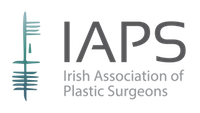Breast Reconstruction
Breast reconstruction is now considered a routine aspect of breast cancer treatment for those women facing mastectomy. Most people are suitable for reconstruction and patients are encouraged to seek a referral for assessment by a plastic surgeon, if they wish to consider reconstruction.
Timing
Reconstruction can be done at the time of mastectomy (immediate) or at a later stage (delayed). Sometimes the decision about timing is made on medical grounds because of adjuvant chemotherapy or radiotherapy, but often the decision is the patient’s choice. If done at the time of mastectomy, it can avoid a further admission to hospital. But sometimes women opt for a delayed procedure as they find it difficult to make decisions about reconstruction, just after receiving a diagnosis of breast cancer.
Team
The breast reconstruction is usually done by the plastic surgeon, as part of the Multi-disciplinary team, after the breast surgeon has done the mastectomy, and in relationship with the oncologist and radiotherapist who determine the appropriate adjuvant chemotherapy and radiotherapy regimes. The breast care nurses will also be able to give advice about breast reconstruction.
Methods
There are three main methods of reconstruction:
- an implant only ( implant or tissue expander)
- the patients own body tissue only ( autologous flap – extended Lat Dorsi Flap, or DIEP Flap, or other less common flaps)
- a combination of implant and flap (usually Lat Dorsi Flap with implant)
There are pros and cons to each method, and one is not “better” than another. The appropriate technique should be matched to the patients needs. The surgeon should take into account the patients background medical details, the need for ongoing breast cancer treatment particularly radiotherapy, and the patients own family or work or other social issues which might have an impact on recovery.
Nipple Reconstruction
Later, usually as a day case, a nipple reconstruction can be performed to complete the reconstruction. A small flap of skin is folded on the new breast to make a nipple mound, and then colour is tattooed to give the areolar definition.
Opposite Breast
While no breast reconstruction will ever be perfect, the aim is to achieve a reasonable match to the opposite breast. However, it can be difficult or impossible to closely match a very large, a very sagging, or indeed a very small opposite breast. In these circumstances your plastic surgeon may discuss then option of surgery to the opposite breast to best achieve symmetry.
